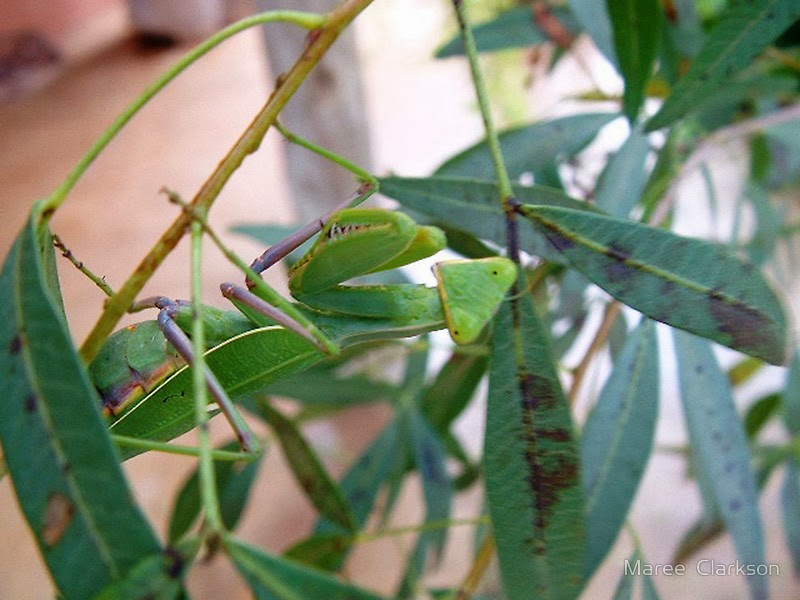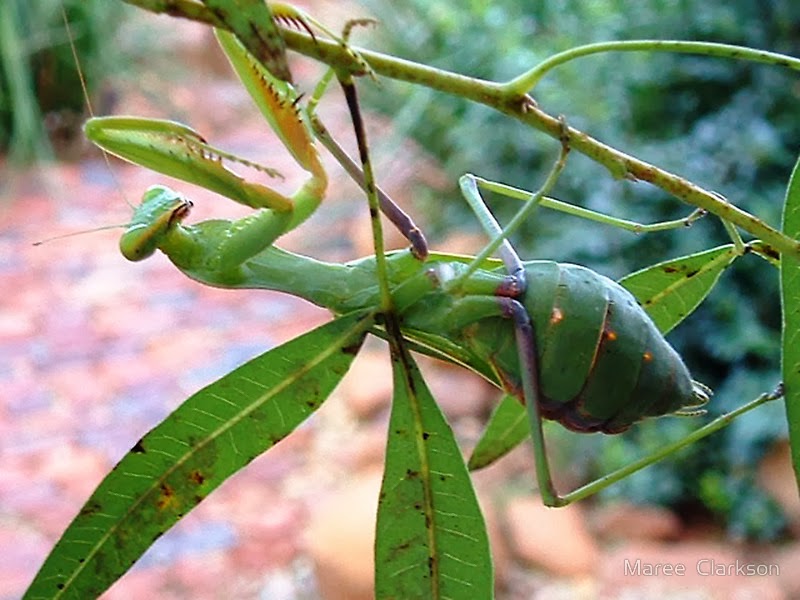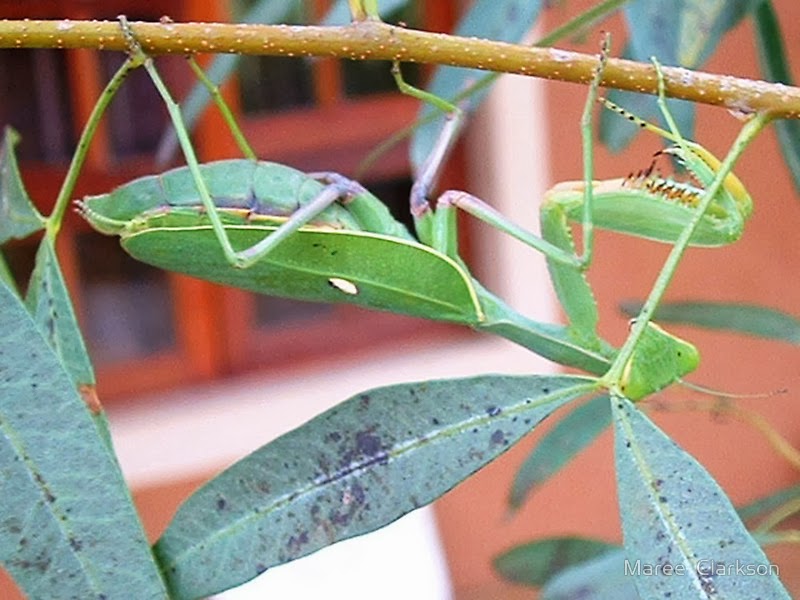Camera : Fuji FinePix 2800Zoom
Taken in my garden, Tarlton, Gauteng, South Africa
Over the year the visitors to the garden vary according to the season, the weather, the heat, rain, food, shelter, breeding cycle and probably other conditions we can’t know or measure – we don’t know it all, that’s for sure.
This Praying Mantis (Mantidae Stagomantis) was so well camouflaged that I almost missed her. If it wasn’t for a slight movement of one of her front legs, I would never have seen her.
This gardener’s friend is a voracious little predator and feeds on harmful insects like aphids and fruit flies, with the adults graduating to flies, butterflies and crickets. Some species even eat small hummingbirds, frogs, lizards, and mice.
The “leaf” on her back is actually her wing! I photographed her in one
of our blue Gum trees (Eucalyptus) on our smallholding in Tarlton, South
Africa.
By and large many people regard insects with horror as either pests or revolting creepy-crawly creatures to be avoided or worse still, squashed without mercy. Infamous as they may be, insects play such a vital role in the food chain and the global eco-system of the planet that without them, life as we know it, would cease to exist.
The Praying Mantis (Mantidae Stagomantis – Afrikaans “Hottentotsgod”, (literally meaning the god of the Khoi) is named for its prominent front legs, which are bent and held together at an angle that suggests the position of prayer.
Generally, mantises are good for the garden. They’re part of a solution to a pest problem, but they eat beneficials, too. And if nothing else is available, they’ll eat each other! So if you plan having one as a pet, have separate housing for each praying mantis you intend to keep!
...
The praying mantis is the only insect capable of rotating its head by 180 degrees, and this, combined with very keen eyesight, is used to observe both predators and prey. Incredibly the mantis’ powerful vision extends over 50 feet. And as if this wasn’t enough they also have hearing abilities that exceed the upper limit of human hearing.

Organic gardeners who avoid pesticides may encourage mantises as a form of biological pest control. Did you know that tens of thousands of mantis egg cases are sold each year in some garden stores for this purpose! During fall, praying mantis females deposit a sticky egg case on the underside of a leaf or on a twig. If the egg case survives winter, the offspring, called nymphs, emerge in late spring or early summer. The nymphs have voracious appetites and typically cannibalize each other if they don’t have an adequate supply of aphids and other small insects. Egg cases are commercially available for placement in landscaping.

She was following my every move as I
moved around the tree to get the best shot. Her little head turned with
every movement I made, seemingly staring me right in the eye all the
while, yet not making the slightest move in case she might give away her
position, perfectly camouflaged amongst the leaves. She chose a good
spot, as her wings looked exactly like the leaves of the blue gum tree
(Eucalyptus) she was resting in.
I really am always thrilled when I find a Praying Mantis in my garden – these insects are real characters and are
not intimidated easily! When I tried to move the leaves to get a better
shot, my finger was summarily grabbed and I got a quick nip for my
efforts. That didn’t hurt, but the front legs holding onto my finger
certainly would have crushed and fatally injured any insect unlucky
enough to venture close. I had quite a time convincing her to let go so I
could carry on photographing!
Uittreksel uit
Siel van Hottentotsgod
Haar koppie draai al in die rondte opsoek na iets sappigs om die honger pyne te stil. Def is ‘n hottentotsgod wat al ‘n paar winters oorleef het hier in die bos geweste. Sy verlang ook nou al baie na haar mannnetjie wat sy al lank terug opgeëet het. Hy sal mos ook nou al trots gewees het op die kleingoed van so by die hele ses. Met haar voorpoot veeg sy ‘n insek traan uit die oë wat altyd waaksaam moet bly.
.
.

























.jpg)

















